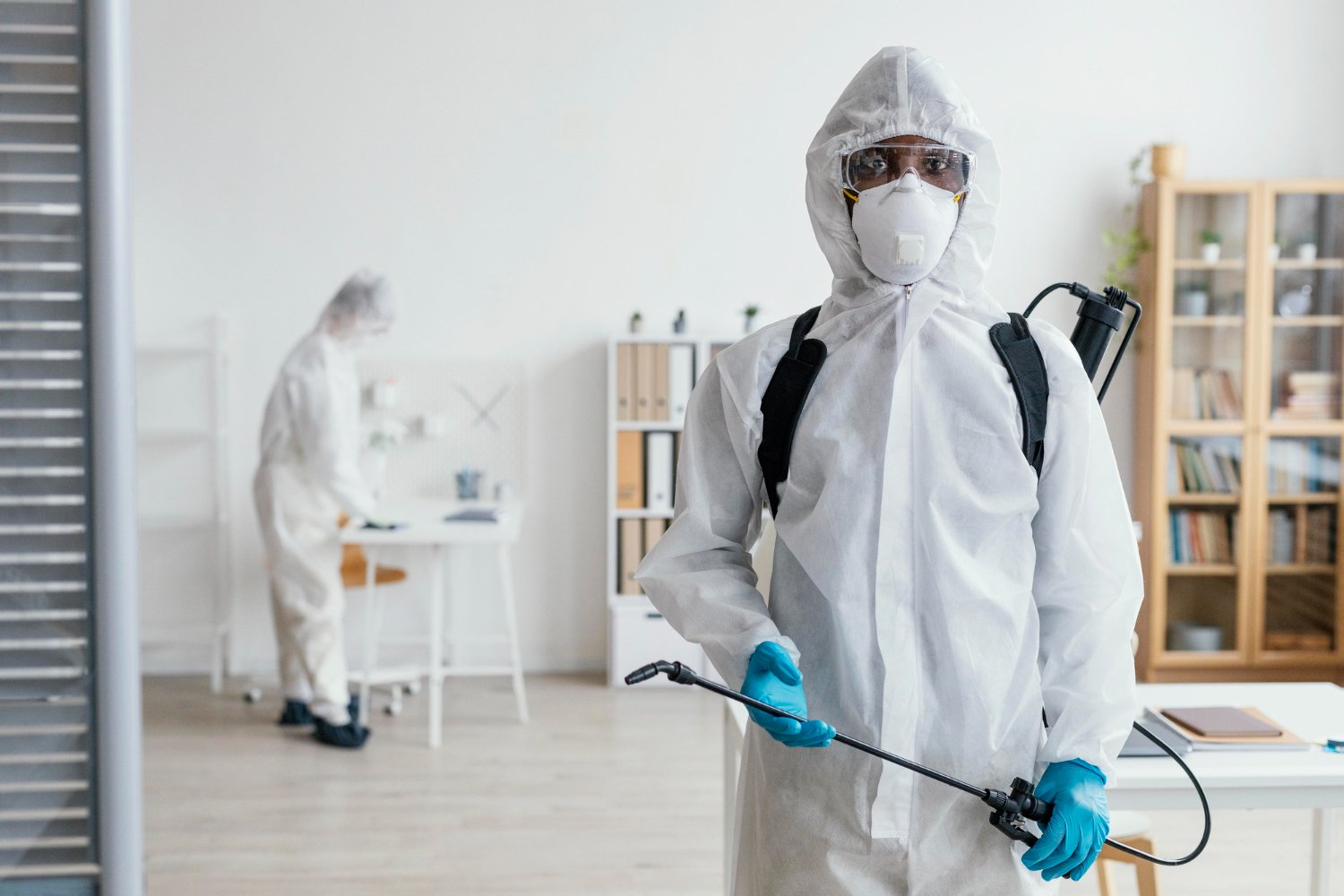Comprehensive A1 Pest Control in Portland Oregon Bed Bugs - Safe Treatments
Comprehensive A1 Pest Control in Portland Oregon Bed Bugs - Safe Treatments
Blog Article
Mastering the Art of Pest Control: Proven Strategies for Long-Term Avoidance and Removal
Bug invasions can be a relentless obstacle for services and house owners alike, calling for a critical approach to properly take care of and eliminate these undesirable burglars. By mastering the art of pest control via tested strategies for long-term prevention and obliteration, one can establish a proactive protection against prospective threats. Understanding the actions of insects, carrying out integrated pest management methods, and making use of natural treatments are simply a few crucial elements essential to achieving long lasting success in this endeavor. Nevertheless, the complexities of maintaining sanitation, carrying out normal inspections, and thorough tracking play equally important roles in maintaining a pest-free environment. As the fight versus insects proceeds to progress, adopting a thorough method becomes vital in securing your building from potential harm.
Understanding Insect Behavior
To efficiently apply bug control approaches, it is important to comprehend the detailed actions showed by various pests in various atmospheres. Recognizing bug actions is a fundamental element of developing reliable insect monitoring plans. Each bug types has distinct practices and preferences that influence their feeding, breeding, and motion patterns. By researching these habits, insect control specialists can recognize one of the most weak spots in the parasite's life cycle to target interventions better.
Recognizing this, parasite control experts can concentrate on sealing entrance points and getting rid of food attractants to prevent these insects. By attending to wetness concerns and sealing splits and crevices, infestations can be substantially minimized.
Applying Integrated Bug Management
Executing Integrated Parasite Monitoring involves utilizing a holistic method to address pest problems by integrating various control tactics and techniques. This approach highlights prevention, monitoring, and control of parasites with a mix of organic, cultural, physical, and chemical interventions. By incorporating numerous strategies, Integrated Parasite Administration (IPM) intends to decrease using pesticides while successfully handling pest populations.
Avoidance is also a fundamental principle of IPM, concentrating on getting rid of variables that attract bugs, such as food, water, and sanctuary. Routine surveillance and inspection are crucial to spot insect problems early and stop them from rising.
Moreover, IPM advertises making use of ecologically friendly and lasting bug control methods to minimize harm to non-target organisms and the bordering environment - a1 pest control portland bed bugs. By adopting an Integrated Insect Monitoring strategy, individuals and companies can effectively take care of pests while reducing dependence on chemical pesticides
Making Use Of Natural Remedies
Structure upon the structure of Integrated Pest Monitoring, a shift in the direction of using all-natural remedies uses an eco-friendly method to pest control. Natural solutions harness the power of nature to prevent and get rid of pests without using severe chemicals that can hurt the environment, humans, and helpful organisms.

In addition, growing pest-repelling plants like marigolds, lavender, and mint around yards and homes can aid discourage parasites normally. These plants produce smells that bugs discover undesirable, driving them away without the need for chemical intervention.
Preserving Tidiness and Health

On a regular basis evaluating and cleansing hard-to-reach locations such as behind home appliances, under sinks, and in storage space closets is crucial for recognizing and eliminating potential bug environments. Mess should be minimized as bugs often look for refuge in heaps of items or debris. Executing a routine cleansing schedule and guaranteeing all members of the home or staff members are informed on appropriate hygiene methods can go a lengthy way in bug prevention. By preserving cleanliness and hygiene standards, the setting becomes much less welcoming to pests, eventually sustaining lasting insect control efforts.
Normal Examinations and Tracking
Routine evaluations and keeping track of play a crucial function in proactively determining and resolving possible pest problems prior to they escalate. By performing regular inspections of both the exterior and interior of a property, insect control specialists can identify very early indications of problems, insect entrance points, and conditions for bug activity. Surveillance entails using catches, baits, and various other devices to track insect activity levels and types present on the properties. This information is indispensable for figuring out one of the most efficient therapy methods and examining the success of parasite control techniques over time.
Regular surveillance enables the very early detection of pest issues, enabling swift intervention to avoid extensive invasions that can be tough and pricey to eradicate. Furthermore, routine inspections and checking assistance to abide by governing needs and maintain a safe, pest-free environment for occupants. Applying a proactive method through regular inspections and monitoring is a foundation of effective pest management, offering tranquility of mind and lasting protection versus bug threats.
Conclusion
To conclude, understanding the art of bug control involves understanding pest behavior, implementing integrated bug administration, utilizing natural remedies, preserving tidiness and health, and conducting regular inspections and monitoring. By adhering to these proven strategies for long-lasting prevention and removal, people can effectively manage bug infestations and develop a much healthier and more secure setting on their own and their environments.
To properly carry out bug control methods, it is vital to understand the intricate behaviors displayed by various pests in different environments (a1 portland bed bug exterminator). By studying these behaviors, bug control experts can recognize the most susceptible points in the pest's life cycle to target treatments a lot more properly
Executing Integrated Insect Monitoring involves using a holistic method to address pest concerns by incorporating various control methods and strategies. By maintaining cleanliness and health criteria, the setting comes to be less hospitable to pests, eventually sustaining long-lasting pest control initiatives.
By conducting normal assessments of both the inside and exterior of a residential or commercial property, pest control professionals can discover early signs of infestations, a1 portland bed bug exterminator parasite entry points, and conditions conducive to pest activity.
Report this page